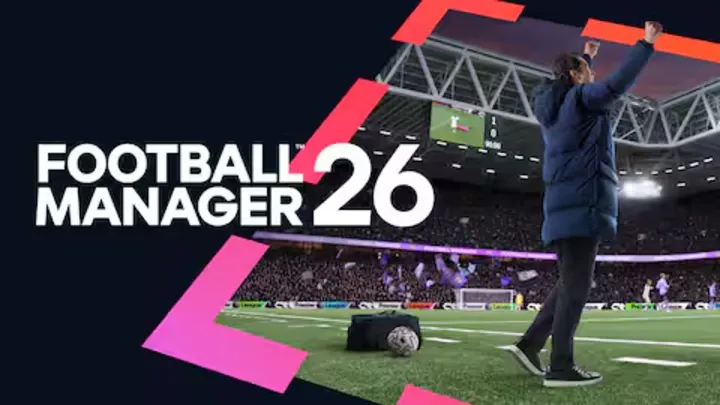Football Manager 2026 is more complex and adaptive than any previous version. The AI learns faster, reacts to your strategies more intelligently, and punishes lazy, predictable tactics. To consistently win, you cannot simply download plug-and-play tactics—you must understand how a tactical system works. This guide focuses on one specific topic: how to create a dominant tactical system that wins across multiple seasons, regardless of club, squad quality, or league difficulty.
This is not a general guide. We dive into FM26’s match engine, tactical roles, pressing behavior, squad structure, and how every line of your team interacts.
Understanding Tactical Identity
Before building tactics, you must know your team’s identity. This is the foundation of your entire system. Many FM26 beginners jump into tactics without knowing what their squad can or cannot do. That’s why their tactics collapse quickly.

Your identity should answer:
- Are you possession-focused or counter-attacking?
- Do you rely on width or central overloads?
- Do you prefer slow buildup or vertical transitions?
- Do you expect your players to press aggressively or sit back?
Once you decide, your tactical system gains a direction and prevents random role combinations that conflict with each other.
Squad Analysis: The Most Important Step Players Skip
FM26 requires deep analysis of your squad before touching any tactic sliders. The key is to understand the structural strengths of your team.
Look at:
- Pace vs. technique in attackers
- Passing range in midfielders
- Aerial ability in defenders
- Fullback stamina and crossing range
- Playmaking sources (central or wide)
- Defensive discipline and teamwork
FM26’s match engine heavily rewards squads that play according to their natural attributes. For example, building a tiki-taka system with slow midfielders always leads to loss of possession and tactical collapses.
Building Your Tactical Shape
The tactical shape is your team’s skeleton. FM26 rewards compactness and coordination. The best shapes depend on identity, but these are the strongest in FM26’s match engine:

4-3-3 DM Wide
Great for transitions, pressing, and controlling midfield triangles.
4-2-3-1 Narrow
Perfect for technical teams and central overloads.
3-5-2
Great for stability, wingback power, and controlling tempo.
4-4-2 Diamond
Excellent for vertical passing and counter-pressing.
Your shape is not about trend—it’s about fitting your squad’s strengths. Do not copy what others use. Instead, choose a shape that highlights your player profiles.
Role Combinations and Player Synergy
FM26 is extremely sensitive to player roles. If you combine roles that contradict each other, your tactic collapses. For example, using two inverted wingers plus an inside forward crowds the middle and kills width. Using a box-to-box midfielder next to a mezzala without a defensive anchor makes your team structurally weak.
Key role combinations that work well in FM26:
- Deep Lying Playmaker + Box-to-Box Midfielder
- Inverted Winger + Overlapping Fullback
- Advanced Forward + Shadow Striker
- No-Nonsense CB + Ball-Playing CB
- DM Anchorman + Roaming Playmaker
Good tactics come from blending roles that support one another, not stacking flashy roles.
Understanding Transition Phases
FM26 matches are won and lost in transitions. Many beginner tacticians only set up attack and defense instructions but ignore transitions between phases.

Three key transitions to master:
- Transition to Attack
- If your team has pace, use rapid counterattacks with vertical passes.
- If your team is technical, play out from the back with structured buildup.
- Transition to Defense
- Set counter-press if your team has high stamina and work rate.
- Use regroup if your team lacks physicality.
- Rest Defense
- FM26 uses advanced rest-defense logic: this determines who stays back during attacks. This prevents counterattacks and adds tactical stability.
Ignoring transition phases causes most defensive collapses in FM26.
Pressing, Defensive Line, and Engagement
FM26 punishes pressing mistakes more than previous versions. You must align pressing intensity with defensive line height and team stamina.
General rules:
High defensive line + high pressing = Only for elite squads with pace.
High line + low pressing = You get destroyed by long balls.
Low line + high pressing = Your team becomes stretched and exposed.
Low line + low pressing = Solid but passive—use only if squad is slow.
Always look at your center-backs’ acceleration and pace before using a high line. FM26’s AI loves exploiting slow defenders with through balls.
Creating Attacking Patterns That Actually Work
Random attacks do not work in FM26. You need clear attacking patterns. These are repeatable movements that create consistent chances.
Three of the strongest patterns in FM26:
Central Overload
Use CAM + Mezzala + Winger cutting inside.
This forces defenders inward, opening wing spaces.
Wing Overload
Use overlapping fullbacks + inverted wingers.
Wide crosses + cutbacks become deadly.
Vertical Channels
Use Shadow Striker + Advanced Forward.
This creates unpredictable diagonal runs.
Great FM26 attacks focus on creating numerical superiority, not dribbling.
Set Piece Mastery: The Most Underrated Way to Win
Set pieces are a cheat code if used properly. FM26 makes set pieces more dynamic and realistic, and now they can decide entire seasons.

Essential set-piece strategies:
- Near-post corner attacks with tall CBs
- Far-post overload free kicks
- Short corners to drag defenders out
- Defensive zonal + one man-to-man for fastest striker
A team can score 20–40 goals a season just from corners if optimized correctly.
Matchday Adjustments and In-Game Management
FM26 AI adapts quickly, so you must make micro-adjustments during matches.
Key adjustments:
- Lower tempo when losing possession battles
- Increase width if opponent packs the middle
- Sub off tired midfielders before 70 minutes
- Switch to a lower defensive line if opponent plays long balls
- Change roles from support to attack when chasing goals
Do not treat your tactic as static. FM26 requires adjustments every match.
Long-Term Tactical Evolution
To dominate multiple seasons, you must evolve your tactic gradually. Players develop, age, or get replaced, and your system must adapt.
Long-term maintenance includes:
- Updating pressing intensity based on squad stamina
- Adjusting formation when new star players arrive
- Rebalancing midfield roles as youngsters grow
- Refreshing set pieces yearly
- Re-evaluating defensive line as pace decreases
A good manager is not married to a tactic. They evolve with their squad.
Conclusion
Football Manager 2026 is not about downloading magic tactics—it’s about understanding how your squad functions, building a coherent structure, mastering transitions, managing pressing, creating attacking patterns, and adjusting during matches. When you understand tactical identity and synergy, FM26 becomes predictable and incredibly rewarding. A well-built tactical system ensures long-term domination, regardless of club size or league difficulty.

















